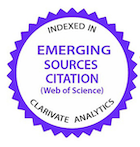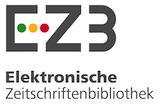Avaliação da disseminação de salmonella pullorum em codornas japonesas (coturnix coturnix) infectadas experimentalmente
DOI:
https://doi.org/10.1590/1089-6891v17i425039Palavras-chave:
Sanidade AnimalResumo
Salmonella Pulllorum é um patógeno que acomete várias espécies de aves, principalmente jovens, dentre essas, codornas. Dessa forma, o estudo teve como objetivo avaliar a eliminação da S.Pullorum em codornas japonesas (Coturnix coturnix) infectadas experimentalmente, bem como avaliar a capacidade de contaminação dos ovos. Foi utilizada uma cepa de S. Pullorum ATCC liofilizada para inoculação de todas as aves (60 codornas com 160 dias de idade). Antecedendo a inoculação, foi realizado exame de Soroaglutinação Rápida em Placas em todas as aves e coletados suabes cloacais individuais de aves escolhidas aleatoriamente. As aves do grupo A e do grupo B foram inoculadas, com 0,5 mL do inóculo contendo 1.5 x 102 UFC e 7.5 x 108 UFC, respectivamente, diretamente no papo. As coletas de suabes cloacais ocorreram nos dias 3, 6, 9, 16 e 23 pós-inoculação e todos os ovos foram coletados. Amostras positivas de suabes cloacais se iniciaram aos 03 dpi. Foi analisado um total de 30 pool de ovos, sendo 73% positivos para S.Pullorum até 16 dpi. Conclui-se dessa forma que possivelmente codornas japonesas adultas são mais resistentes a infecção por S.Pullorum, mas pode disseminar o agente ao meio ambiente.
Palavras-chave: Codorna japonesa; infecção; inoculação; ovos.
Downloads
Downloads
Publicado
Como Citar
Edição
Seção
Licença

Este trabalho está licenciado sob uma licença Creative Commons Attribution 4.0 International License.
Autores que publicam nesta revista concordam com os seguintes termos:
- Autores mantém os direitos autorais e concedem à revista o direito de primeira publicação, com o trabalho simultaneamente licenciado sob a Licença Creative Commons Attribution que permite o compartilhamento do trabalho com reconhecimento da autoria e publicação inicial nesta revista.
- Autores têm autorização para assumir contratos adicionais separadamente, para distribuição não-exclusiva da versão do trabalho publicada nesta revista (ex.: publicar em repositório institucional ou como capítulo de livro), com reconhecimento de autoria e publicação inicial nesta revista.
- Autores têm permissão e são estimulados a publicar e distribuir seu trabalho online (ex.: em repositórios institucionais ou na sua página pessoal) a qualquer ponto antes ou durante o processo editorial, já que isso pode gerar alterações produtivas, bem como aumentar o impacto e a citação do trabalho publicado (Veja O Efeito do Acesso Livre).






























